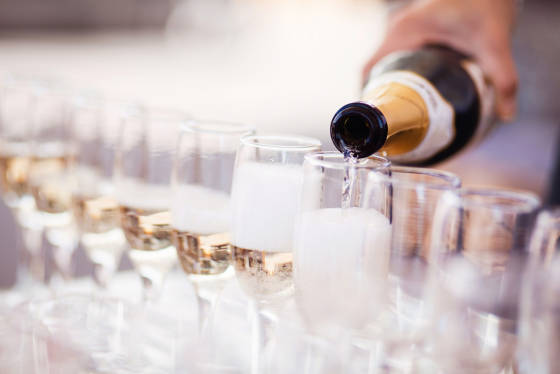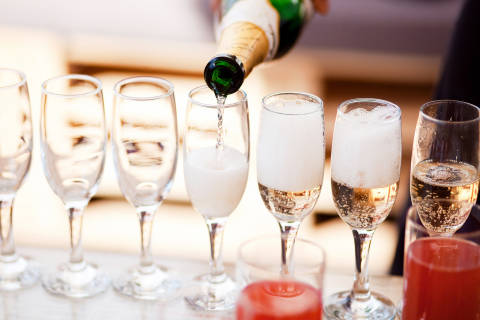WASHINGTON — Every year at this time, wine lovers buy more bottles of sparkling wines and Champagne to celebrate New Year’s Eve than they do the rest of the year.
Unfortunately, the category of sparkling wines has been stereotyped as something only to be enjoyed during special occasions such as birthdays, weddings or, as is currently the case, the requisite end-of-year celebration.
However, sparkling wines — and Champagnes in particular — are incredibly versatile. They pair well with a variety of food or can be enjoyed on their own.
Last week, I recommended several sparkling wines — which, you’ll recall, can come from any wine region in the world except the Champagne region of France. Only wines made in the appellation of Champagne, and using only the strict Méthode Champenoise, can be called “Champagne.” All other bubbly wines are referred to as “sparkling wines.”
Understanding Champagne wine is not complicated. There are only three grape varietals that are allowed in Champagne: chardonnay, pinot noir and pinot muenier. They must be grown in one of the official 319 crus using the Méthode Champenoise. There are three main types of blends made from these grapes. Blanc de blancs (white for whites) is made from only chardonnay grapes, while blank de noirs (white from blacks) Champagnes are made with pinot noir and/or pinot meunier. While they both look similar, a blanc de blancs will taste very differently from a blank de noirs.
Lastly, there are a few important qualities to consider when it comes to the level of “dryness” of the wine. After the wines have developed their bubbles in the bottle, they are disgorged to remove the yeast and sediments, which causes the Champagne to lose a little wine, so the winemaker then tops off or “doses” the wine with either reserve wine or wine with some sugar in it. The amount of sugar added during the dosage procedure is what gives the Champagne its brut (driest), extra-brut, dry, extra-dry, demi-sec or doux (sweetest) designation.
See? Not so bad. So this New Year’s Eve, open a bottle of Champagne and discover more than bubbles. Discover joie de vivre in a bottle. Happy New Year!
The best values for authentic Champagne will be nonvintage, in which wines are blended from several different years in order to maintain a certain consistency — or house style. A wonderful example from Champagne is the Non-Vintage Montaudon Brut. It is crisp and juicy, with pretty floral notes winding through flavors of Fuji apple, apricot, anise and candied orange peel. It is fresh and focused, with a creamy texture and a smoky subnote that lingers on the finish. $35
Growers pride themselves on making wines that have a sense of place, or terroir, and few do it better than Pierre Gimonnet. The Non-Vintage Pierre Gimonnet & Fils Blanc de Blancs Brut is made exclusively from chardonnay and boasts flavors of creamy lemon and nectarine that are elegantly woven into a round, balanced wine with wonderful structure and tiny, precise bubbles. A touch of brioche is a pleasant highlight at the end of the graceful finish. $45
I love Champagnes that have both color and bubbles in the glass. The Moët & Chandon Nectar Impérial Rosé is a blend of pinot noir and pinot meunier grapes with a small percentage of chardonnay. This rosé has notes of powerful peach with flavors of ripe red raspberries and subtle cherry on an elegant frame. It is a voluptuous expression of the house’s style. $50
Vintage Champagne is always designated by a specific year on the bottle and is made entirely from wine produced from grapes grown and harvested in that particular year. If you want to splurge on a vintage wine this New Year’s Eve, try the 2010 Mailly L’Intemporelle Grand Cru. Mailly is a prominent co-op made up of 70 growers, and all of the grapes sourced for the wine come exclusively from grand cru vineyards near the village of Mailly. This quality is expressed in the chalky minerality and balance that supports flavors of rip apple, honey and beeswax. Beautiful acidity keeps the wine fresh and bright. $99








